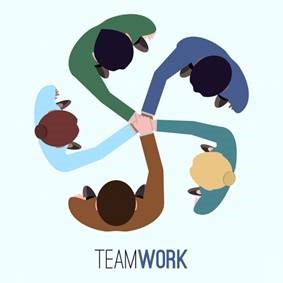What are Cultural Differences?
Culture is defined as a set of values, practices, traditions or beliefs a group shares, whether due to age, race or ethnicity, religion or gender. People from different countries, or different educational backgrounds hold different beliefs, different personal values, and even a different sense of humour.

Examples of Cultural Differences in the workplace
I’ve been living in the UK more than 10 years. I would like to share some of the culture shocks I’ve come across during my life in the UK. It’s useful to recognise examples of cultural differences in the workplace to avoid embarrassment and misunderstanding.
• Eating habit – bone or no bone?
I still remember my first culture shock from my first job in the UK around ten years ago. Once a month, all of the staff would have lunch together with homemade food from each person. The first lunch after I joined the company, I cooked chicken curry. During the lunch, one of my colleagues suddenly cried: “Oh my, the chicken has bones!”. My colleagues were so surprised by the way I cook the chicken. I wasn’t sure of what was wrong with the chicken cooked with bones. In my home country, people cook chicken or fish with the bones, or even with the heads and tails. It’s the first lesson I learned about culture differences. Since then, I never cook chicken with bones in it to bring in for others. Once you become aware of the culture differences, you should try to accommodate as best you can.
• Shake hands or bow?
I used to work in a company whose clients are mostly from foreign countries. Once, there was a client who travelled to the UK to visit us. When he arrived, he shook hands with male staff and bowed to female staff. I was surprised by his way of greeting female staff. After some research, I came to understand that his religion prohibited him from shaking hands with women to whom he was not related or married.

Some of the culture differences are easy to be spotted and to be learned, i.e. social etiquette. Once you are aware of the differences, you can adjust your behaviour. However, some of the culture differences are more complicated, and cause more confusion, like my next example.
• Modesty or Confidence?
In western countries, people are encouraged to develop self-confidence, to shout about your own ideas and achievements in public. Whereas in Far East countries, people think modesty is a polite and decent behavior. For example, “My English is poor.” Lots of Chinese folk will say this even when their English is actually really good. Please don’t think they are lacking confidence, on the contrary, they are just being modest.
How to deal with the cultural differences in the workplace
• Become self-aware
We all have our own beliefs, values, biases, and prejudices. They make up who we are, how we work, and what we feel comfortable with, as well as what we don’t. Don’t feel badly for any biases or prejudices you may have. They are implanted in us based on our background and experience. The important thing is acknowledging them, so they can be overcome.
• Learn your co-worker/client’s culture
Take time to research or enquire into your co-worker/client’s culture, and things they like and value. For example, their food, their traditions and etiquette. Because of your extra effort, your co-worker will feel appreciated, and your clients will be more apt to recommend you to other people. At Blu Sky, we’re implementing a monthly lunch where we’ll all bring in something to eat based on our heritage and encourage discussion around our backgrounds.
• Working Through the Language Barrier
It’s very easy to learn basic words and sentences of a foreign language. But what a challenge it is to become fluent! It’s likely that some of your co-workers or clients are from different countries, and they are still working toward being fluent in English. Make sure you adjust your English to fit your foreign co-workers/clients when you are communicating with them; try to avoid using slang and jargon words and speak a little slower. At Blu Sky, we quite often decide to learn a phrase in a few languages – for example, we’ve recently all picked up different language translations for ‘thank you’.
• Promote appreciation of cultural differences in the workplace
Hold a monthly working lunch where team members may share their cultural background or a clients’ culture. This will promote socialization and allow employees to gain more knowledge of different cultures. It also gives each team member the opportunity to appreciate one another’s culture.

Conclusion
All in all, confronting cultural differences in workplace is unavoidable. It is important to be aware of those cultural differences, keep an open mind, and approach them with sensitivity, respect, and curiosity. Embrace cultural differences, find common ground where everyone can understand and respect each other. When there is misunderstanding, work through it and learn from it.


